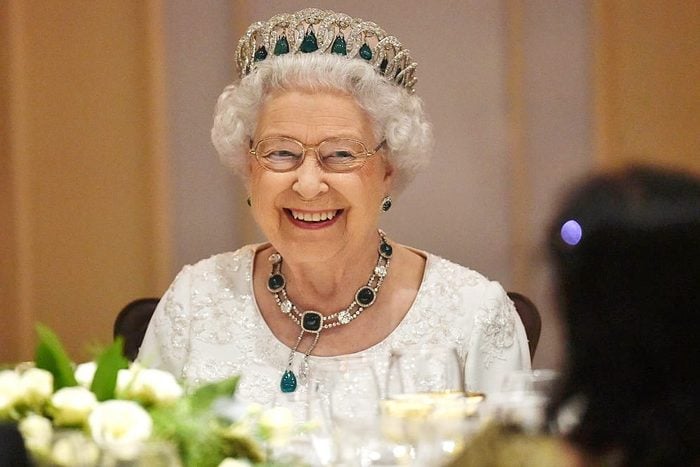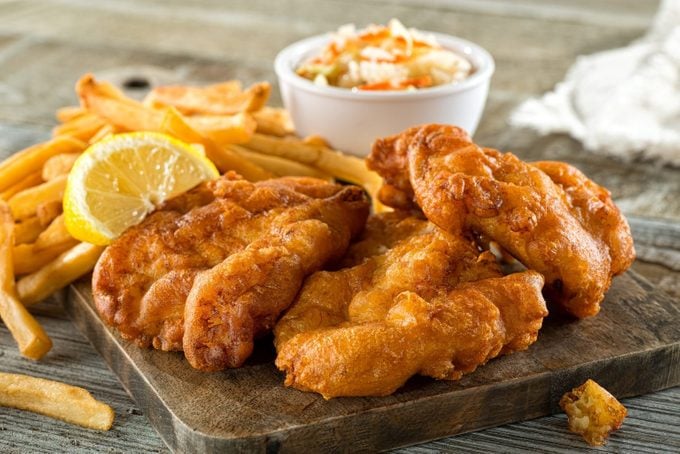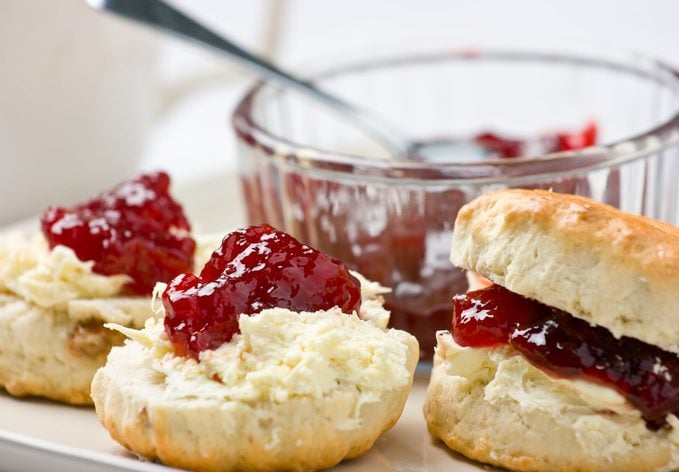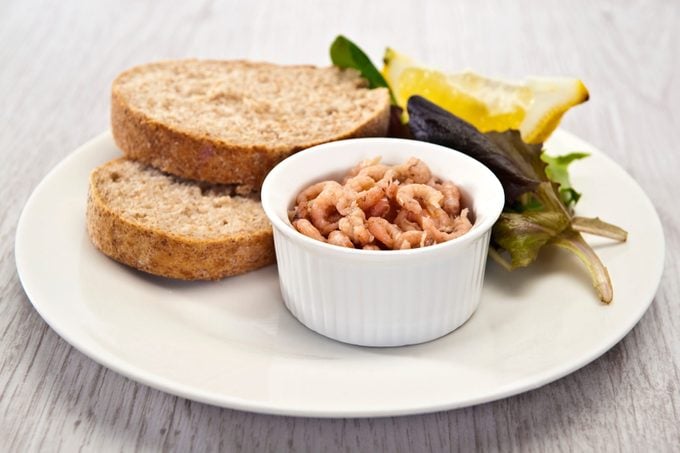The One Food Queen Elizabeth Ate Every Day
Updated: Mar. 15, 2024

Queen Elizabeth's afternoon tea featured a childhood favorite you can create at home.
From PB&J sandwiches to tater tots, our favorite childhood foods gave us comfort when we were kids and still do the same decades later. And while we may not have snack time slotted into our schedules anymore, most of us still munch our way through the day or grab some late-afternoon food to tide us over until dinner. Needing a little something to nibble on in the afternoon is such a universal experience that even Queen Elizabeth II herself could relate. But the menu for Queen Elizabeth’s afternoon tea wasn’t quite what you would have expected.
After all, if we commoners like to eat carrot sticks and crackers, surely the royal family’s eating habits are a bit more refined. Caviar and foie gras for her majesty, perhaps? Those fancy foods may satisfy other members of the royal family tree, but when it comes to afternoon tea they’re firmly one of the foods Queen Elizabeth wouldn’t eat. Turns out, the queen’s preferred afternoon tea was one of her favorite childhood snacks—and she’d eaten it every day since she was a toddler. Hint: It’s not Lunchables.
What Was Queen Elizabeth’s Favorite Food?
Every day for more than 90 years, Queen Elizabeth II ate her favorite snack: jam sandwiches, also known as jam pennies. As Darren McGrady, a former chef at Buckingham Palace, explained on his YouTube channel, the young Queen Elizabeth first tried jam pennies in her nursery as a little girl, and she remained a fan ever since.
The recipe for Queen Elizabeth’s afternoon tea snack is simple: Butter two slices of soft, white bread and slather one in strawberry jam—preferably handmade from Scottish strawberries grown in the gardens of Balmoral Castle, the Queen’s summer home in Scotland. Sandwich the bread together and use a small, round cookie cutter to cut out crustless circles. Have you tried this Buckingham Palace cookie recipe?
So why the cutesy name? They’re called jam pennies because they’re the size of old English pennies—around 1.2 inches. With that delicious homemade jam, we could probably eat a pound of pennies.
When Did Queen Elizabeth Eat Her Favorite Meal?
The queen snacked on her favorite food during afternoon tea, a meal that’s been a United Kingdom tradition since around 1840. That’s when Anna Maria Russell, the seventh Duchess of Bedford, found that she was in need of a snack between lunch at noon and dinner at 9 p.m—and who can blame her? The Duchess asked that tea, cake, and bread and butter be brought to her room every day at 5 p.m., and the custom soon spread among the upper classes.
Nearly two centuries later, the trend has spread to hotels and tea shops around the world. But perhaps a new trend is in order: After hearing about Queen Elizabeth’s afternoon tea spread, we’re inclined to pair our Earl Grey with a few jam pennies.
What Were Some of Queen Elizabeth’s Other Favorite Foods?
Included among her majesty’s preferred foods were other afternoon tea favorites, as well as regional delicacies and a classically British dish.
Fish and Chips

According to McGrady, everyone in Buckingham Palace looks forward to Friday’s traditional lunch of fish and chips. Staff and royals alike enjoy the meal, but the queen’s fish and chips were a little more refined than what was served downstairs. The queen preferred her fish baked, not fried—McGrady cooked it in the oven with a panko crust. As for the royal chips, the chef cut them into perfectly sized rectangles before frying them and serving them with a handmade tarragon hollandaise sauce.
Chocolate Perfection Pie
Considering the fact that she lived in, you know, a palace, Elizabeth II may have seemed like someone with little in common with the common folk. But when it came to food, she was just like us: It turns out she was a bit of a chocoholic.
One of Queen Elizabeth’s favorite desserts was what McGrady calls chocolate perfection pie, a chocolate pie layered with dark and white chocolate and chocolate shavings. Unlike most of us when it came to chocolate, however, the queen favored moderation—she was classy like that.
Scones with Jam and Clotted Cream

English tea scones regularly appeared in Queen Elizabeth’s afternoon tea selection, and they were always served with jam and clotted cream (cream heated rather than whipped to thicken). The queen apparently loved to eat seasonal produce and game from the gardens, rivers and estate of Balmoral. So if you’re hosting an authentic Queen Elizabeth afternoon tea, be sure to make your jam by hand from the best of the summer’s berries.
When it comes to serving, do it the royal way: It’s jam first, cream second, as the queen used to say. And while you’re acting like you’re from across the pond, remember that the British put milk in their tea.
Salmon from the River Dee
When McGrady describes the queen’s diet and favorite foods, a few things are clear: She had a serious sweet tooth and loved to eat fish and seafood. One of her favorite dishes was fresh-caught salmon from the River Dee, which runs through the estates surrounding beautiful Balmoral. The castle has been the site of many a Queen Elizabeth afternoon tea, as it’s the place where the royal family has traditionally spent their summer holidays.
Morecambe Bay Potted Shrimp

Morecambe Bay in Lancashire, a county in northwest England, is famous for its seafood, including potted shrimp, and Queen Elizabeth was reportedly a huge fan of the snack. In fact, she loved them so much that the supplier, James Baxter & Son, was granted a royal warrant as recognition of its quality as a supplier to the royal family.
The shrimp were served in what McGrady describes as a secret spicy butter, and the queen apparently enjoyed them on warm toast, which allowed the butter to melt in. Morecambe Bay potted shrimp is also what the royal family eats on Christmas, along with the famous Christmas pudding.
Sources:
- Darren McGrady: “Afternoon Tea at Buckingham Palace”
- Darren McGrady: “British Fish and Chips”
- Darren McGrady: “Royalty and Royal-tea”
- Darren McGrady: “Q&A”
- The British Museum: “The tea-rific history of Victorian afternoon tea”